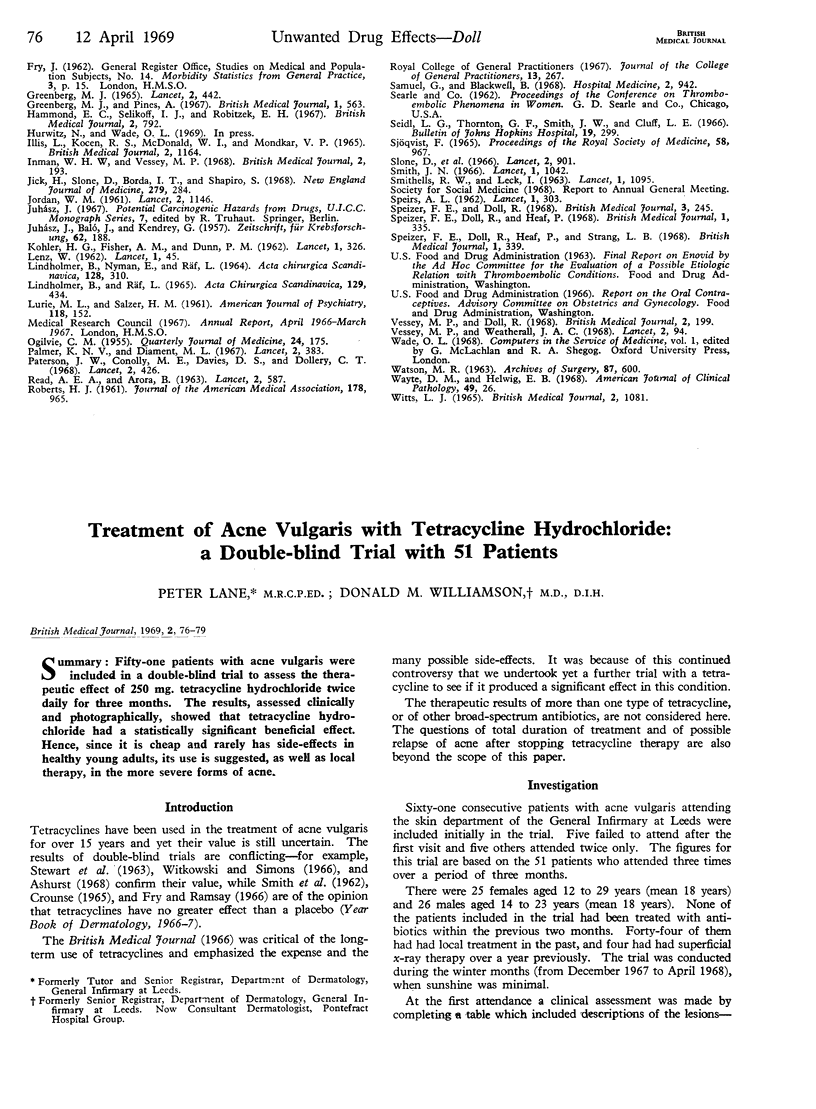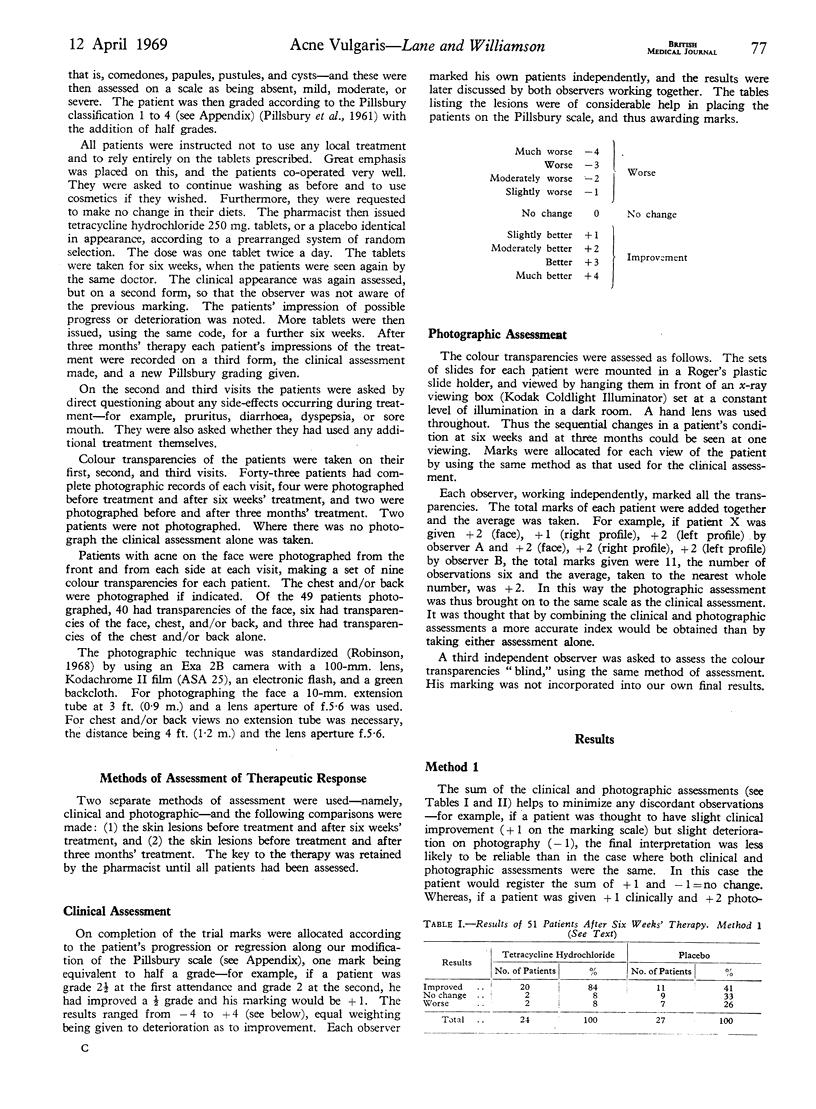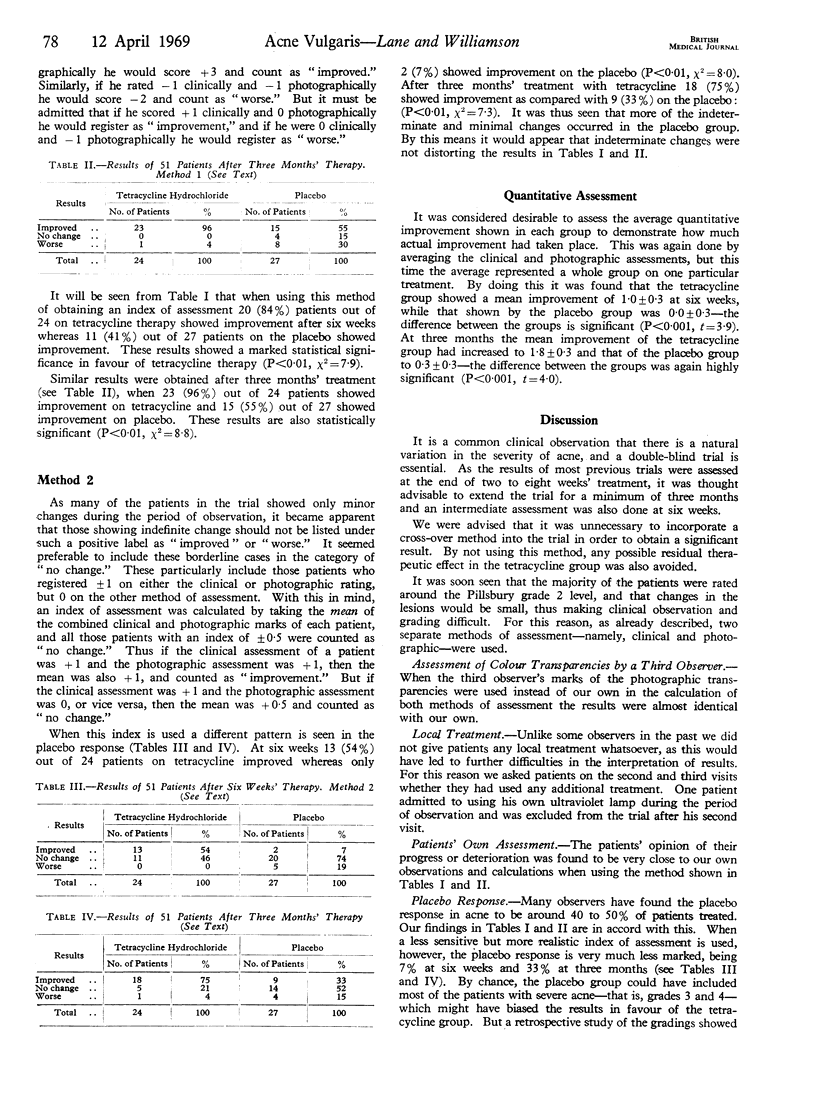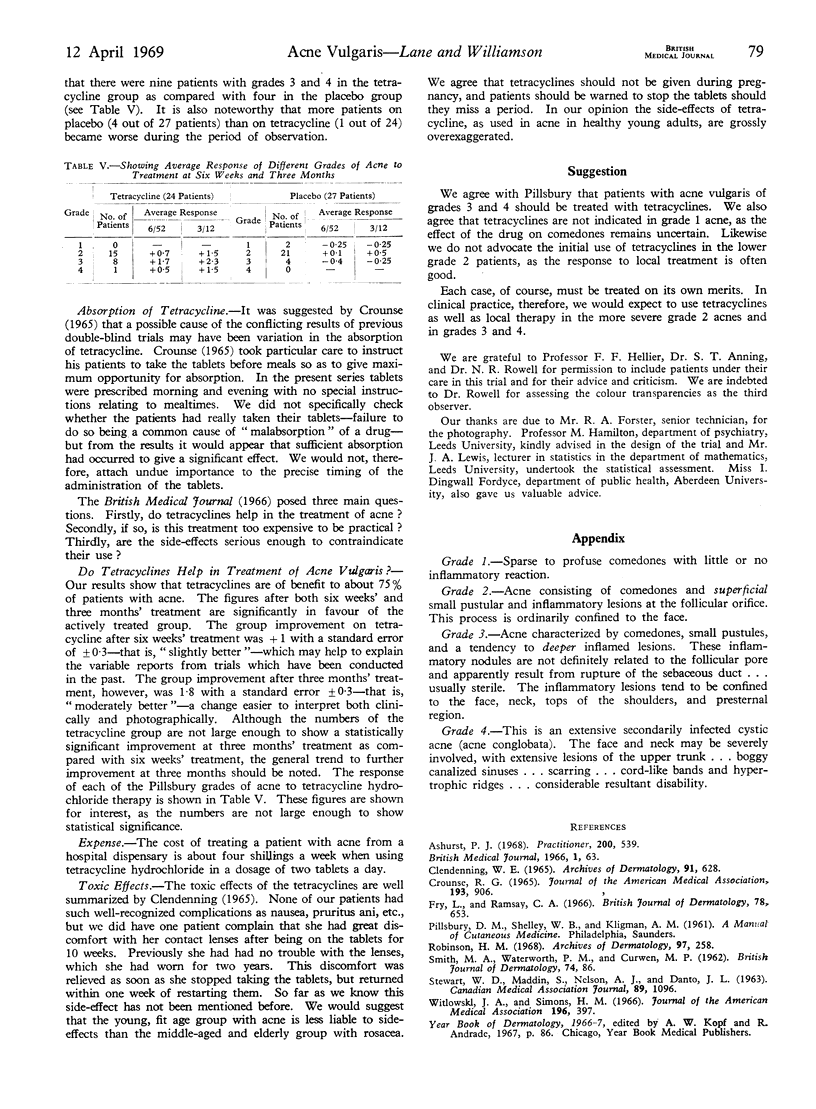Abstract
Fifty-one patients with acne vulgaris were included in a double-blind trial to assess the therapeutic effect of 250 mg. tetracycline hydrochloride twice daily for three months. The results, assessed clinically and photographically, showed that tetracycline hydrochloride had a statistically significant beneficial effect. Hence, since it is cheap and rarely has side-effects in healthy young adults, its use is suggested, as well as local therapy, in the more severe forms of acne.
Full text
PDF



Selected References
These references are in PubMed. This may not be the complete list of references from this article.
- Ashurst P. J. Tetracycline in acne vulgaris. Practitioner. 1968 Apr;200(198):539–541. [PubMed] [Google Scholar]
- CLENDENNING W. E. COMPLICATIONS OF TETRACYCLINE THERAPY. Arch Dermatol. 1965 Jun;91:628–632. doi: 10.1001/archderm.1965.01600120060016. [DOI] [PubMed] [Google Scholar]
- CROUNSE R. G. THE RESPONSE OF ACNE TO PLACEBOS AND ANTIBIOTICS. JAMA. 1965 Sep 13;193:906–910. doi: 10.1001/jama.1965.03090110044012. [DOI] [PubMed] [Google Scholar]
- Robinson H. M., Jr Photographic evaluation of therapeutic efficacy. Arch Dermatol. 1968 Mar;97(3):258–261. [PubMed] [Google Scholar]
- STEWART W. D., MADDIN S., NELSON A. J., DANTO J. L. THERAPEUTIC AGENTS IN ACNE VULGARIS. I. TETRACYCLINE. Can Med Assoc J. 1963 Nov 23;89:1096–1097. [PMC free article] [PubMed] [Google Scholar]
- Witkowski J. A., Simons H. M. Objective evaluation of demethylchlortetracycline hydrochloride in the treatment of acne. JAMA. 1966 May 2;196(5):397–400. [PubMed] [Google Scholar]


